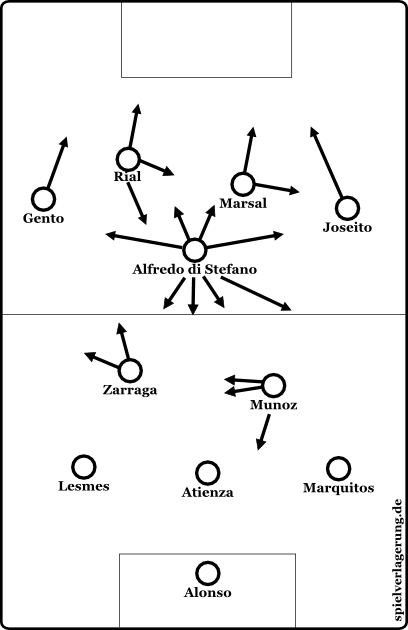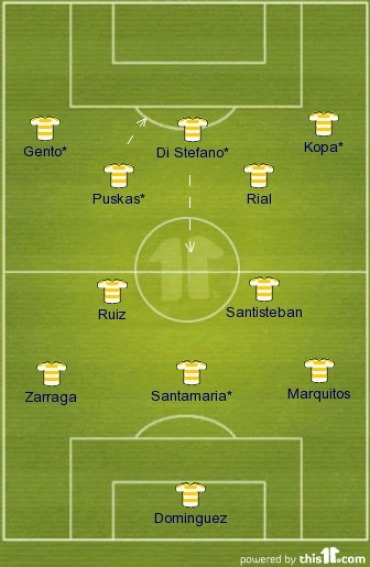Areola still on top of the world
(FIFA.com) 27 May 2015
© Getty Images
His words were bold, but the situation demanded boldness. "Score your penalties," Alphonse Areola promised his team-mates, "and I'll do my bit."
The France goalkeeper was a picture of composure at the Ali Sami Yen Arena on 13 July 2013, with his side about to challenge Uruguay from the spot for the FIFA U-20 World Cup title after their final had ended goalless. Deciding to take matters into his own hands, Areola quickly made good on his vow, diving right to deny Uruguay's first taker in the shoot-out before going the same way to thwart their second. France went on to be crowned champions, and Areola was their undisputed hero.
"A hero? I don't know about that," says the 22-year-old now, speaking to
FIFA.com. "But I do feel as if I did something big, that I pulled off a real feat. To save two penalties like that in the final, after performing well in the game – you really feel strong afterwards. But it was a team effort. You need to know how to save penalties, but you also have to know how to score them. And on top of that, penalty shoot-outs are always a bit of a lottery. That day, I hit the jackpot."
It was certainly a turning point, not just for Areola but also for his team-mates, with the likes of Paul Pogba and Geoffrey Kondogbia also sharing in the triumph. Previously unknown for the most part, France's young victors were immediately transformed into stars. "Honestly, it changed my life," says Areola. "We attained a whole new status. There was suddenly more media attention on us and we became less invisible in the street. Above all, it opened doors."
Paris Saint-Germain's third-choice keeper at the time, Areola was loaned out shortly after his exploits in Istanbul, first packing his bags for Lens. The venerable French club were experiencing hard times, but Areola helped them secure their return to the elite and picked up the title of best goalkeeper in Ligue 2 in the process. Then to Bastia, where the Corsican outfit were seeking a replacement for retired former international Mickael Landreau. Enjoying another fine season, Areola played his part in a respectable 12th-place finish and a memorable run to the Coupe de la Ligue final.
"That's exactly the progress I'd hoped to make," says the youngster. "After the World Cup, my goal was to move forward step by step, without getting too far ahead of myself. And that's what I've done." As for what next season holds in store, Areola remains unsure. "I don't know yet, but what matters to me is to play and get regular playing time to help me progress. The decision on where I go next will be based on that."
Remarkably shrewd and clear-headed for his age, Areola clearly knows what he wants. Much of that can perhaps be put down to the fact that he recently became a father for the first time. "Our daughter was born on 5 May," he says. "A World Cup victory changes your life, but so does that. It lifts you. Unfortunately, I haven't been able to be there day to day with my wife and daughter back in Paris, but I head up there as soon as I get an opportunity to be with her and enjoy every moment."
Making the step up
Naturally, Areola would like to spend even more time in the French capital. Born and raised in Paris, he has been at PSG since the age of 13, with his two loan spells the only time he has spent away from the club. "I'm Parisian through and through and I've always been a fan of PSG," he explains. When I signed for Paris, it was a dream come true. For now, my priority is to get playing time, but playing for PSG obviously remains one of my career objectives." He likewise hopes to wear the gloves for France's senior team. "I do think about it, but that'll only come through good performances and consistency, which again means getting playing time."
Several of his peers have already made the step up. Pogba, Kondogbia, Lucas Digne and Kurt Zouma have all gone on to represent
Les Bleus, while also experiencing the glamour of the UEFA Champions League with respective club sides Juventus, Monaco, PSG and Chelsea. Pogba is even set to appear in the Champions League final on 6 June. "Paul is very, very good," says Areola. "Technically, physically and mentally, he has everything you need to be a success. He proves that every time he plays. We're happy for him: he truly deserves everything that's happening to him."
Judging by that homage from goalkeeper to former captain, France were aided by a special atmosphere within their squad as they bore down on U-20 World Cup glory. Beyond the games, the victories and the celebrations, it is that which Areola remembers most. "Paradoxically, the most intense moment for me was just before we started our campaign – the moment we looked each other in the eye and said we could win the trophy. And that's what we did. The key to our success was our solidarity." His team-mates scored their penalties, Areola did his job, and France went home as champions.


 I'm more into pretty face. But a nice ass wouldn't hurt, though.
I'm more into pretty face. But a nice ass wouldn't hurt, though.








